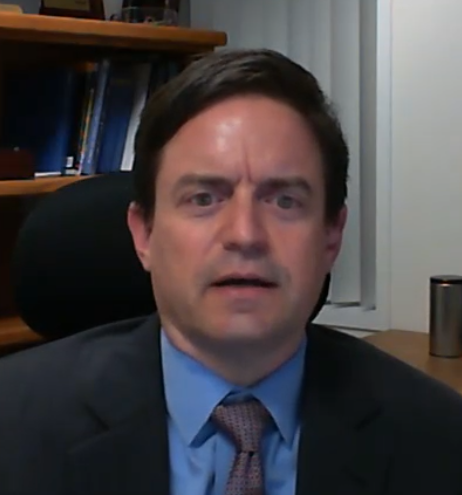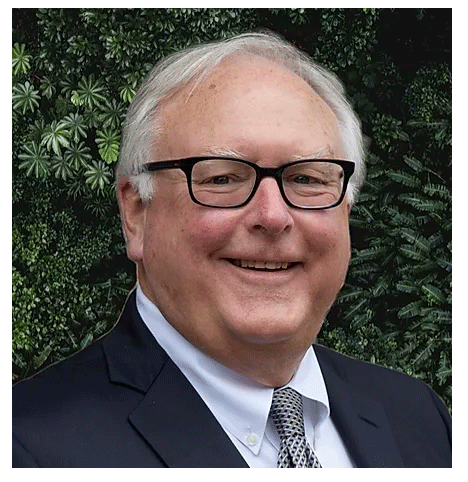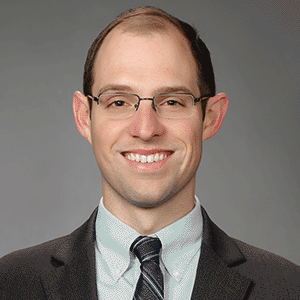
The Cal/OSHA Standards Board unanimously passed an emergency COVID regulation. Many of the provisions of the standard may conflict with existing law, including workers’ compensation laws, FEHA, and HIPAA, say employment lawyers. The rest are already covered by exiting Title 8 regulations. Some conflicts create constitutional issues.
In a display of speaker stuffing, California labor unnecessarily overplayed its hand, knowing the fix was in, and the standard would pass. There were more than seven and a half hours of testimony by some 100 speakers, the overwhelming majority of which self-identified as workers from the hospitality industry.
Many could not speak English and used translators. It was quite telling at one point when a translated commenter was prompted to give her remarks, only to remain silent. After much prompting, she said, “I don’t know what I’m supposed to say.”
Employer representatives told Cal-OSHA Reporter that the workers who spoke uniformly expressed complaints about their employers, not a commentary on the standard at issue. Employers said that worker story after worker story was ‘heartstring pulls’ but consistently and obviously about issues presently covered by existing regulations.
Another expert told Cal-OSHA Reporter every single hazard or issue discussed by the employees – each thing they said they were exposed to or wronged by an employer – is covered under labor code sections 3203 and 5141. “There is no need whatsoever for the b***s**t,” he said.
Now, the reg moves to the Office of Administrative Law (OAL), which will accept comments for five days. The questionably necessary standard is likely to go into effect by the end of November. It will be in effect for six months.
All of this comes as multiple vaccines have been announced and are pending FDA approval. Delivery via the military by the Trump Administration awaits clearance.
Employer representatives urged the board to delay its vote for one month to give stakeholders time to digest the 21-page standard fully, and in the meantime, hold an advisory committee to iron out differences. But Worksafe and other labor representatives insisted that the board approve the standard and put “explicit protections in place right away” for employees across the state. Few of California’s 600,000 employers will ever hear of the standard.
After-the Fact Advisory
The Board has pledged to hold an after-the-fact advisory committee in December to look at some of the most controversial elements of the regulation. To what end employers say they can’t guess.
Even supporters admitted the regulation is “far from perfect.” Employer representatives were less kind. “I cannot think of a standard that sets up employers for failure more than this one,” says Fred Walter, an attorney with the Conn Maciel Carey law firm.

–– Fred Walter, attorney
But Cal/OSHA Chief Doug Parker, explained that the government “tried to create a standard that was based on [Injury and Illness Prevention Program] requirements and existing guidance so that employers would be well positioned to comply with it. We listened closely to the concerns of employers.” But the government set no advisory committee meetings, and none were held. Parker is formerly head of Worksafe, the labor organization who called for and is behind the standard.
Stakeholders can only comment to the OAL.
The standard, General Industry Safety Orders §3205, has the following main elements:
- Employers will be required to have a written COVID Prevention Program, which can be incorporated into the IIPP or be stand-alone;
- They must identify, evaluate and correct COVID hazards, the first two with the participation of employees and their authorized representatives;
- They also must investigate and “respond effectively” to COVID cases and notify employees who might have been exposed within one day. Employees who may have been exposed must be offered COVID testing at no cost;
- COVID cases in the workplaces must be reported to local health authorities;
- Physical distancing and mask-wearing are required unless it is not possible in the former. But the burden is on the employer to demonstrate it isn’t possible. There are also exceptions for masks;
- Return-to-work provisions are included for employee COVID cases;
- There are specific and more stringent requirements for multiple COVID infections and outbreaks in the workplace;
- The proposal also includes COVID prevention procedures in employer-provided housing, such as labor camps, and employer-provided transportation to and from work.
Fed Up
Many of the now passed standard’s provisions have drawn strong objections from employer groups who are frankly fed up with the board. They say it goes “far beyond the scope and authority of the board,” as one commenter put it, and could conflict with state law, such as AB 685 and SB 1159.
“The board has no authority to regulate housing, transportation, wages, or benefits as proposed by this regulation,” according to a letter sent by a coalition of agricultural associations. “This overreach is symptomatic of an attempt to achieve public health objectives through regulation of the employer-employee relationship.”

Rob Moutrie, the workplace safety advocate for the California Chamber of Commerce, says the regulation brings up questions of authority, feasibility, and clarity. For instance, he notes that §3205(c)(10)(C) requires employers to “continue and maintain an employee’s earnings … as if they had not been removed from their job.” Wage issues don’t fall under Cal/OSHA’s authority, Moutrie asserts.
“The plain and simple fact is that employees who go out with confirmed cases are covered under California’s workers’ comp plan which is the sole and exclusive remedy,” says another employer. To the extent OAL approves this portion of the plan, it is very likely unconstitutional. “The board did not consider constitutionality.”
Regarding the increased requirements during outbreaks, Moutrie notes that non-work-related social spread of COVID could “easily” cause an outbreak. “We could be in perpetual outbreak” through no fault of employers, he says.
The privacy issues raised by the standard are troubling, as well, Moutrie adds, such as a requirement for employers to verify employees’ case status. “Employers don’t want to be in the position of grilling employees on their status,” or seeking medical records from reluctant healthcare providers, he says.
Moutrie adds that even one advisory meeting “could have made this so much better,” he says. “Will employers be able to do this in 10 days?”
Impossible to Comply
Healthcare providers are covered under the federal HIPPA laws. The ‘Health Insurance Portability and Accountability Act’ passed in 1996 HIPAA is a federal law that sets a national standard to protect medical records and other personal health information. No health insurer is allowed to provide medical information to employers making compliance with the regulation literally impossible. Health insurers are unable by law to ‘verify employees case status,’ and other FEHA – Fair Employment and Housing laws in California make it illegal or questionably illegal to even ask.
Pamela Purcell, president of the California Industrial Hygiene Council, says the organization opposes the standard as “just not necessary. Our state already has adequate regulations in place to address the COVID-19 hazards that potentially affect California workplaces.” She calls the regulation an “overly involved set of requirements that will be difficult for employers with the most sophisticated health and safety programs to meet, let alone small businesses that may not have access to the resources that will be needed to comply.”
Nicole Rice of the California Manufacturing and Technology Association called the standard “unworkable and confusing.” Elizabeth Treanor, director of the Phylmar Regulatory Roundtable OSH Forum, says the Finding of Emergency justifying the standard “fails to demonstrate that this standard will actually improve the situation at all. Significantly,” she says, “the standard does not allow for flexibility when public health authorities revise guidance based on new scientific information, such as applicability of an effective vaccine.”
Labor Wins
Labor advocates oppose a delay. “We are in an emergency situation,” says Cynthia Rice, an attorney for California Rural Legal Assistance. Waiting for an advisory committee “is not good public health policy,” she says.
Addressing the complexity of the standard, Parker notes, “It does have some complexity, but this is a standard that covers infectious disease. It’s going to have some complexity.” He also acknowledged the short timeframe for implementing the rules. “Some employers are going to need more time. We intend to fully take that into account in determining how they’re implementing the rule,” including good-faith efforts. He adds that DOSH will continue to offer compliance assistance.
“We believe that we can work with stakeholders … to make sure that we can implement this rule while giving people a little bit of flexibility to reflect the realities of what’s going to be a considerable task in some cases,” Parker says.
DOSH Deputy Chief for Health Eric Berg adds that the regulation is not inconsistent with either AB 685 or SB 1159, and in some cases, implements the former.
Responding to criticisms that the standard could violate the Administrative Procedures Act, both Parker and Standards Board Executive Officer Christina Shupe say the regulation had multiple legal reviews at the board, the Division, and at the state Labor and Workforce Development Agency.

